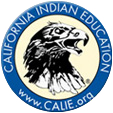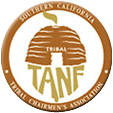October 20th 2012 was a bright, breezy Saturday afternoon on the lawn of the Frederick Douglass Historic Site in Washington, DC. About a hundred public school students were joined by adults and distinguished guests to celebrate the 50th anniversary of the National Park Service making the home a museum to the famous abolitionist who wrote and fought in many struggles for justice and equality.
The young people were invited by the Frederick Douglass Family Foundation to launch a campaign to educate people about the world’s new slavery known as trafficking in human beings, particularly women and children. Kenneth Morris, Jr., the great, great, great grandson of Frederick Douglass and President of the Family Foundation, spoke about this worldwide crime that today enslaves millions in the US and around the globe. He then introduced more than a dozen students from New Jersey schools who stood on the historic porch and read their petition against sex trafficking. It is being circulated to coincide with January 1, 2012, the 150th anniversary of President Lincoln’s Emancipation Proclamation. An American woman caught up in the traffic in human beings told of her ordeal and how she survived.
Kenneth Morris, Jr., the great, great, great grandson of Frederick Douglass and President of the Family Foundation, spoke about this worldwide crime that today enslaves millions in the US and around the globe. He then introduced more than a dozen students from New Jersey schools who stood on the historic porch and read their petition against sex trafficking. It is being circulated to coincide with January 1, 2012, the 150th anniversary of President Lincoln’s Emancipation Proclamation. An American woman caught up in the traffic in human beings told of her ordeal and how she survived.
Congresswoman Eleanor Holmes Norton of Washington, DC told how Frederick Douglass, who lived out the last years as resident of the District, fought to help the city gain equal representation in the US Congress. She is continuing the battle using Douglass’s slogan: “Agitate! Agitate!, Agitate!”
Historian William Loren Katz, author of Black Indians: A Hidden Heritage and forty other books, told how Douglass, who was a Black Indian, devoted his life [1817-1895] to fighting slavery, then to pressuring President Lincoln to free and arm African Americans during the Civil War. He told how Douglass also played a crucial role in 1848 during the first Women’s Rights Convention in Seneca Falls, New York. He saw that the resolution demanding women have the right to vote passed, and it later led to a Constitutional Amendment in 1919.
After he escaped from bondage, Douglass also became a freedom rider in Massachusetts in the 1850s desegregating its railroad trains. Using specific actions and quotations from Douglass, Katz showed how Douglass fought for justice for all people regardless of race, sex, or religion. Douglass was still a runaway when he spoke to thousands in England nd Scotland arguing for the right of the poor to vote and enjoy equal justice. In Ireland, the great Irish freedom fighter and orator, Daniel O’Connell, introduced him to hundreds of audiences as “the Black O’Connell of the United States.” In Ireland during the potato famine, Douglass championed Ireland’s right to independence from England and compared this “starving time” to American slave conditions.
In the United States Douglass daringly denounced the US for invading Mexico to secure more land for slavery. He also called the Fourth of July as “a gross injustice” and “cruel joke” to slaves. He fought for the rights of immigrants, Chinese, and Hebrews. He urged Congress to pass “a great system of aid to education” and provide cheap land for the poor. He opposed capitol punishment.
He said, “I will never desert the cause of the poor, no matter black or white.” Katz concluded: “We are a better country, better men, women and children because Frederick Douglass walked among us, left his words, told of his struggles.” He urged people to support the Frederick Douglass Family Foundation’s educational campaign against the new slavery.





